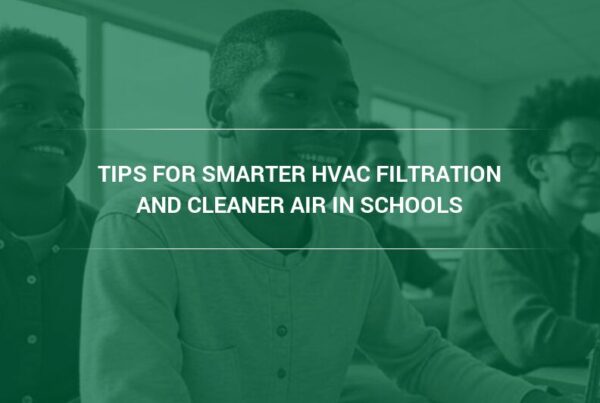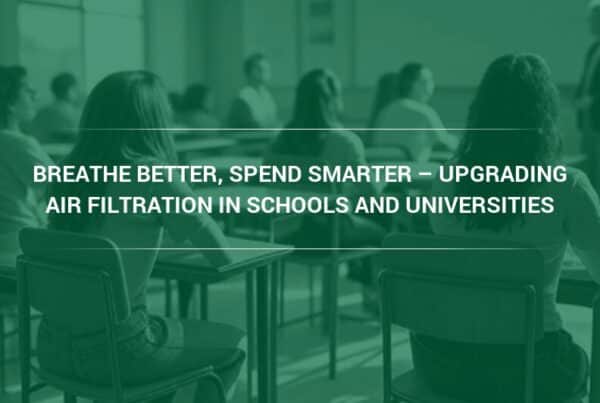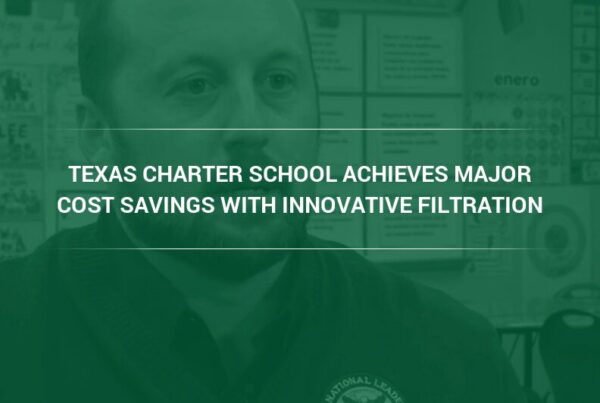Summer break provides the ideal opportunity for schools and universities to make changes and updates to facilities, including performing critical HVAC maintenance and upgrades. With students and faculty mostly absent, maintenance teams can thoroughly inspect, clean, and optimize air filtration systems to ensure optimal indoor air quality (IAQ) when classes resume. This article explores evidence-based maintenance strategies that improve air quality while potentially reducing energy costs by 15-20%.
Why Summer Maintenance Matters for Educational Facilities
Educational facilities face unique air quality challenges. According to the U.S. Department of Energy, schools and universities account for approximately 10% of commercial building energy consumption nationwide, with HVAC systems representing 35-40% of that energy use. During the academic year, these systems operate continuously while serving dense populations of students and staff.
The American Society of Civil Engineers grades U.S. school infrastructure at a concerning “D+” rating, with nearly a quarter of public school buildings in “fair” or “poor” condition. This aging infrastructure makes proactive maintenance particularly crucial during available maintenance windows.
To learn more about how indoor air quality affects student morale, attendance, and academic performance, see Camfil’s recent article: Everything You Need to Know About Air Quality in K-12 Schools for the 2024-2025 Academic Year
Impact of Indoor Air Quality on Educational Outcomes
Research consistently demonstrates the connection between air quality and student performance. Studies published in the Journal of Environmental Economics and Management show 3-8% improvements in standardized test scores in properly ventilated classrooms compared to those with poor ventilation.
Additionally, schools with optimized HVAC systems report fewer respiratory-related absences. Each percentage point reduction in absenteeism translates to approximately $40-$60 per student in recovered educational funding (based on average daily attendance formulas used by many state education departments).
Essential Summer Maintenance Tasks for Educational HVAC Systems
1. Comprehensive Filter Evaluation
Summer is the ideal time to assess filtration efficiency against current standards. The pandemic has heightened awareness of air quality in schools, making it essential to:
- Evaluate current filtration against ASHRAE recommendations, local regulations, and building codes for educational facilities
- Consider upgrading to higher MERV-rated filters where system configuration allows
- Ensure filter frames and housing have proper seals to prevent bypass
Upgrading from MERV 8 to MERV 13 filters can improve rated particle filtration efficiency from an average of approximately 70% to over 90% for particles between 1.0 and 3.0 microns, significantly improving classroom air quality when properly installed and maintained.
2. Consider the IAQ Needs of Each Area
The first step in choosing the right air filtration products is to evaluate your school’s specific air quality needs. Each school is unique, with varying classroom sizes, building designs, and applications that influence its air quality requirements.
Indoor pollution sources create gaseous pollutants, like VOCs, and particulate matter. Improving air quality in schools requires activated carbon filters and mechanical filters, such as HEPA or MERV-A-rated filters.
3. Selecting and Replacing Filters
Based on the needs of each area of the school, HVAC capacity and specifications, and pollutants present, different kinds of filters may be more appropriate than others. The following air filters have been found to be successful in helping schools achieve their IAQ goals:
- Camfil’s Dual 9: A MERV 9/9A panel filter for particulate matter, available in one-inch, two-inch, and four-inch sizes, features a 5-Star Energy Cost Index rating and is designed to last 12 months in commercial use.
- Camfil’s AQ13: A high-capacity MERV 13 pleated air filter compatible with existing air handling units, offering twice the service life of standard MERV 13 filters. It meets MERV 13 standards while reducing operational costs.
- Camfil’s Durafil ES3: A high-efficiency filter designed to last up to three years while reducing energy consumption. Available in MERV 13A, 14A, and 16A, it’s the leading final filter in the air filtration industry.
- Camfil’s CityPleat: A dual-purpose filter designed to tackle both gaseous pollutants and particulate matter, available in two- or four-inch depths, perfect for various commercial and residential uses.
- Camfil’s CamCleaner CC500: A high-quality air purifier equipped with factory-tested and certified 99.99% medical-grade HEPA filters, the CC500 enhances air circulation by filtering 500 cubic feet of air per hour. Ideal for classrooms, it boosts air changes per hour and is easy to install without the need for special tools or labor.
Reach out to an air quality expert to find the best filters for your school.
4. Ductwork Inspection and Cleaning
Over an academic year, dust and potential biological contaminants can accumulate in ductwork. Summer provides the opportunity for:
- Visual inspection of ductwork integrity
- Professional cleaning of supply and return air ducts
- Sealing of any leaks that reduce system efficiency
Studies indicate that cleaning contaminated ductwork can improve airflow by 15-30% while reducing the energy needed to distribute conditioned air throughout the facility.
5. Coil Maintenance and Sanitization
Cooling coils can become breeding grounds for microorganisms when moisture is present. Proper maintenance includes:
- Deep cleaning of cooling coils using approved cleaning agents
- Inspection and clearing of condensate drain lines
- Application of EPA-registered antimicrobial treatments where appropriate
Clean coils not only improve air quality but can reduce energy consumption by 5-10% compared to fouled coils that restrict airflow and heat transfer.
Planning for Long-Term Filtration Improvements
Beyond immediate maintenance, summer provides an opportunity for facilities managers to evaluate longer-term HVAC improvements:
- Conduct airflow testing to determine if existing systems can support higher efficiency filtration
- Evaluate the cost-benefit of installing pressure sensors to monitor filter loading
- Consider targeted upgrades to filtration in high-risk or high-occupancy areas
School districts that implement strategic filtration improvements report average energy savings of $0.30-$0.40 per square foot annually while simultaneously improving indoor environmental quality.
Notably, according to researchers who conducted a 2015 study on the relationship between IAQ and standardized test scores, “Rough calculations suggest that IAQ-renovations may be a more cost-effective way to improve standardized test scores than class size reductions.”
Balancing Air Quality with Energy Efficiency
Educational facilities face the dual challenge of maintaining healthy indoor air while managing tight operational budgets. Modern filtration solutions can help achieve both objectives:
- Low-resistance, high-efficiency filters can improve IAQ with minimal energy penalty
- Two-stage filtration approaches can extend final filter life while improving overall efficiency
- Filter selection tailored to specific regional air quality challenges offers optimized protection
When properly implemented, a comprehensive air filtration strategy allows educational facilities to significantly reduce particulate matter while potentially lowering overall HVAC system energy consumption by 5-15%.
LEARN MORE: Premium Air Filtration for Schools and Universities
Before Students Return: Final Verification
As summer maintenance concludes and the new academic year approaches, facilities teams should perform final verification steps:
- Operate systems for at least 72 hours to identify any issues before building occupancy
- Verify that proper outside air intake rates meet current ventilation standards
- Document baseline pressure readings across clean filters for future comparison
This verification process ensures systems are operating optimally when students and faculty return.
Camfil Helps Schools Invest in Education by Boosting IAQ
The summer maintenance window represents a critical opportunity for educational facilities to optimize HVAC systems for the year ahead. By implementing comprehensive maintenance protocols, schools and universities can create healthier learning environments that support educational outcomes while potentially reducing operational costs.
Indoor air quality is not merely a facilities concern—it’s an educational investment that pays dividends in improved student health, attendance, and academic performance.
Ready to optimize your educational facility’s air filtration system? Contact our school IAQ specialists for a free HVAC assessment that identifies opportunities to improve both air quality and energy efficiency before the new academic year begins.
About Camfil Clean Air Solutions
For more than half a century, Camfil has been helping people breathe cleaner air. As a leading manufacturer of premium clean air solutions, we provide commercial and industrial systems for air filtration and air pollution control that improve worker and equipment productivity, minimize energy use, and benefit human health and the environment. We firmly believe that the best solutions for our customers are the best solutions for our planet, too. That’s why every step of the way – from design to delivery and across the product life cycle – we consider the impact of what we do on people and on the world around us. Through a fresh approach to problem-solving, innovative design, precise process control, and a strong customer focus we aim to conserve more, use less and find better ways – so we can all breathe easier.
The Camfil Group is headquartered in Stockholm, Sweden, and has 30 manufacturing sites, six R&D centers, local sales offices in 35+ countries, and about 5,600 employees and growing. We proudly serve and support customers in a wide variety of industries and in communities across the world. To discover how Camfil USA can help you to protect people, processes and the environment, visit us at www.camfil.us/
##
Media Contact:
Lynne Laake
Camfil USA Air Filters
T: 888.599.6620
E: Lynne.Laake@camfil.com
F: Friend Camfil USA on Facebook
T: Follow Camfil USA on Twitter
Y: Watch Camfil Videos on YouTube
L: Follow our LinkedIn Page
Sources:
https://ascelibrary.org/doi/abs/10.1061/JAEIED.AEENG-1468
https://www.sciencedirect.com/science/article/abs/pii/S0095069614001016



